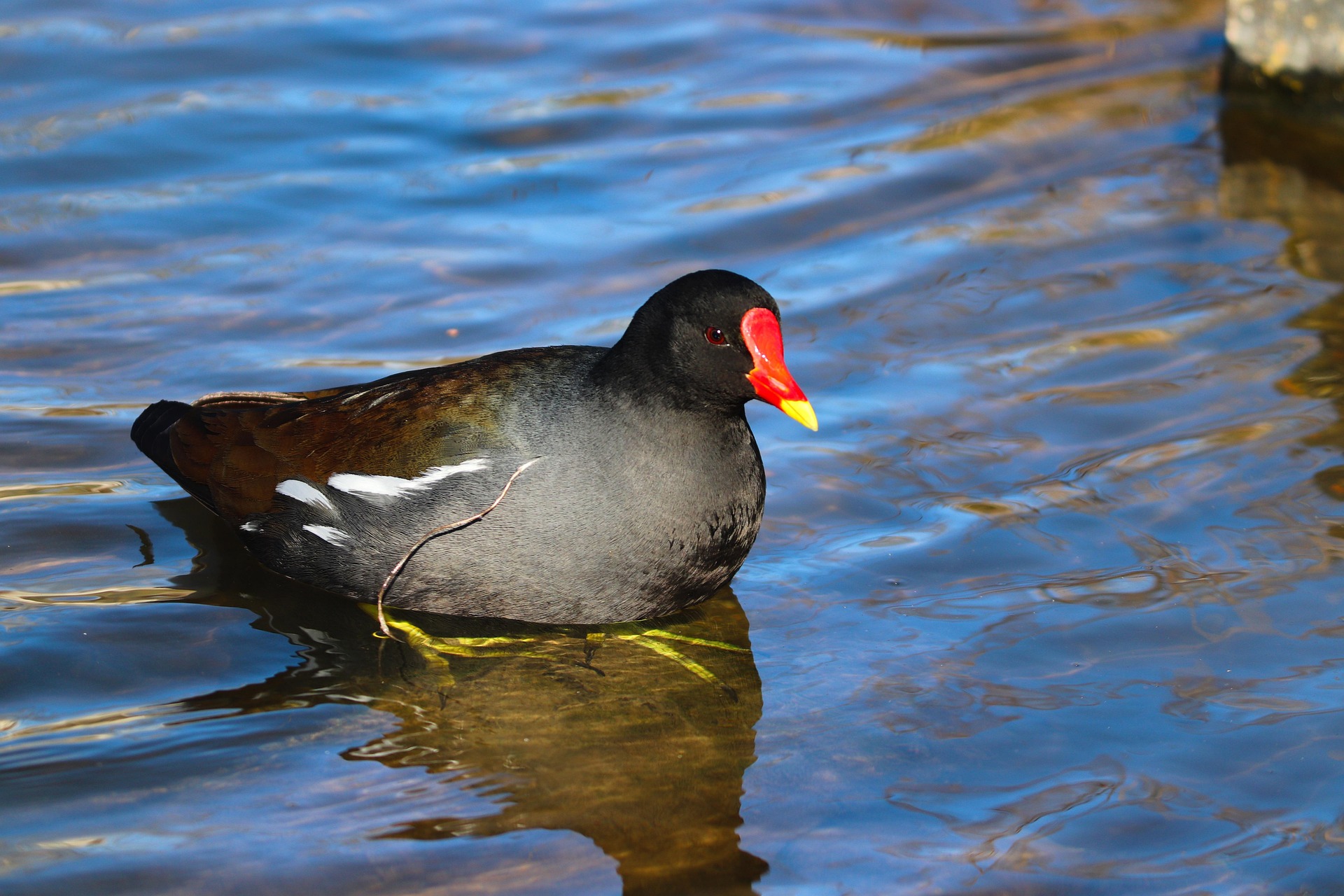
Now we are safely in the King George V Park, we are going to continue the trail by following the river and walking along the raised embankment. This embankment was built in the 1960s to prevent any flooding of the meadowland that is now the park. Follow the path along the embankment until you find the first rubbing post. Its not too far from the bridge.

The moorhen is a blackish waterbird with a red and yellow beak. When they are walking on land, you will see their green and yellow legs. They spend much of their life on the water, using their legs to propel themselves through the water. They are not expert flyers, and typically use their wings to fly short distances close to the water, rather than soaring in the sky.
They feed on water plants, seeds, insects, worms, and fish. They are easily seen when feeding and are often found alongside mallards. It is best not to feed moorhens and ducks, especially not bread, but you can feed them small quantities of special duck food, broken-up lettuce, grapes, or even Cheerios (but not the flavoured ones)!
Moorhens have large untidy nests made of twigs, which they build along the water's edge. They can be distinguished from the related, but larger, coot, which has a white beak and face.
 I hope that you have seen some moorhens while you were making your rubbing. You might like to keep a look out for them as you continue the trail. We are now going to walk further along the embankment to the next post, which is down close to the river bank and shows you a very different animal.
I hope that you have seen some moorhens while you were making your rubbing. You might like to keep a look out for them as you continue the trail. We are now going to walk further along the embankment to the next post, which is down close to the river bank and shows you a very different animal.
When you get to the next post PRESS THIS BUTTON